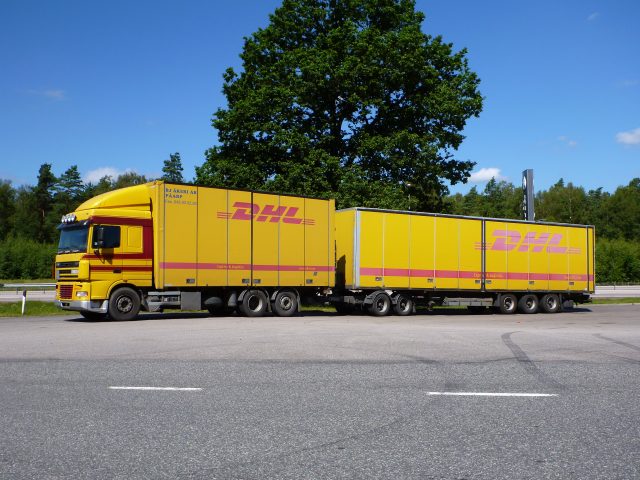Increasing the Survival Rate in Aircraft Accidents: Impact Protection, Fire survivability and evacuation
Increasing survivability: the scope for benefit
Up until 1970, the fatal air accident rate world-wide had been falling dramatically. While the rate, since then, has decreased slightly, this has not been accompanied by an equivalent reduction in the fatality rate of those onboard aircraft.
Approximately, 90 per cent of aircraft accidents can be categorised as survivable or technically survivable. In round and, of course, fluctuating figures it is estimated that of the 1500 who die each year in air transport accidents some 900 die in non-survivable accidents. The other 600 die in accidents which are technically survivable and crashworthiness, fire and evacuation issues are all important. Of these 600 perhaps 330 die as a direct result of the impact and 270 due to the effects of smoke, toxic fumes, heat and resulting evacuation problems.
Public demand for air travel has increased steadily over the last two decades and further substantial growth can be expected. Forecasts for the doubling of air traffic over the next decade have led airframe manufacturers to start to consider designs for airframes carrying as many as 800 or 1000 passengers. For this reason not only the issues concerned with the prevention of the occurrence of accidents, but also issues related to improving the survival rate in the event of an accident will have major importance in the years to come. Failure to take steps now to deal with the increasing exposure to the risk of accident and injury in air travel can only lead to the lowering of current public confidence in air safety.
Improving survivability will necessitate comprehensive review of all promising options available to regulators and industry. In some cases, actions will involve incorporating new features to aircraft at design stage, where costs can be more easily assimilated. In others, where structural considerations are less important, introduction at ‘refit’ stage may be appropriate. Some measures will be of the type to allow more or less immediate application, others will require research.
Ideally, the identification of effective cabin safety enhancement measures for implementation should take into account a number of different factors. These include the ranking of potential safety measures in terms of the expected number of lives saved, consideration of how difficult the implementation of the measure will be, the cost of each measure, whether a measure can be implemented as a retrofit to existing fleets or is only applicable to new aircraft, whether a measure will be effective once implemented or will only be effective in combination with passenger behaviour modification.
A fundamental limitation to this process, however, is the lack of adequate accident information from a sufficient number of accidents to allow full cost benefit analyses to be performed. The absence in many accident investigations of detailed information on injury mechanisms and cause of death makes the precise estimation of the potential benefits of any one measure very difficult.
The Cherry study (1995), one of few studies which have performed a detailed trade-off concerning the full range of possible survivability measures, provides insight into available options. However, the small number of accidents available for investigation in such studies means that the basis for determining priorities still relies heavily upon best expert judgement rather than a numerically specific approach.
The current review aims to provide an overview of the various issues in the field of secondary safety or crash protection in commercial aviation, and to suggest steps on the basis discussed previously, which might be taken by the European Union in its new air safety strategy, and others which could contribute to improvements in air crash survivability.
Measures to improve the survival rate
Impact protection
No single solution exists which, if introduced in isolation, would lead to a very significant improvement in impact protection. Rather, an approach which makes many small enhancements aimed at a large improvement is needed. This calls for a proper balance in the state of the art of the various aspects of impact safety instead of a very detailed effort in one field and none in another. For this reason, programmes such as the Occupant Crash Protection Program as defined by the JAA Research Committee, which was not initiated due to lack of funding, the FAA-JAA-TCA Cabin Safety Research Program and the developing EU programme in this area need support.
Many proposed safety measures require further research before their benefit to cabin safety and the optimal design can be firmly established. In most cases, the availability of accurate, validated analytical models is indispensable. Further development of such models, not forgetting further biomechanical data input, and support for the full scale tests required for their validation are essential for work aimed at improving impact protection.
Based on the Cherry study and other information referred to in this report and considering the other aspects mentioned above, three impact protection measures are recommended for priority attention:
- Improvement of seat-floor strength;
- Three-point safety harness occupant restraint;
- Improvement to strength of overhead stowage.
Fire survivability
Statistical trends clearly show that fire substantially decreases the chance of surviving an aircraft accident. In the event of more passengers surviving the impact through improved crash protection, then even more will be at risk from fire. Following research programmes carried out in the last decade, a number of measures show promise in increasing the survivability rate in fire accidents and can be implemented without insurmountable problems and with no or relatively little additional research effort. Looking at these, the following is recommended:
- Fitment of an external camera/cockpit monitor, following study of procedures required to guarantee safe operation;
- Introduction of smoke hoods in all commercial aircraft, following ergonomic study of stowage and accessibility, and suitability to an acceptable proportion of passengers;
- Fitment of watermist systems in new types of commercial aircraft;
- Implementation of proposed regulations for improvements in fireworthiness standards of cabin materials, including toxic emission prevention standards;
- Provision of additional equipment and training for Fire Services operating close to airports.
It should be emphasised that these measures are not mutually exclusive. In addition, there is a case to be made for introducing them all at some reasonable, attainable standard rather than seeking perfection in just one area.
Other measures, though potentially useful, do need more substantial research. One of these is the use of Anti Misting Kerosene (AMK) fuels. Although the potential benefit of using AMK has been widely accepted, it still has to be demonstrated that it could be used safely on a routine basis.
Evacuation
Fast and effective evacuation can save many lives in case of a technically survivable aircraft accident. In the last decade major research programmes have been undertaken which have provided important new information on how evacuations proceed and which factors influence their effectiveness.
People’s responses to emergency situations vary from relatively calm and effective responses to competitive and agressive behaviour or in other cases to total inaction. In situations which are perceived as directly life-threatening, many people lose their motivation to collaborate in order to save others, but instead will try to save themselves first.
Of course, it may be difficult if not impossible to change people’s immediate response and make them all respond calmly and rationally in these types of situations. However, there are a number of other factors that can be changed and that will improve the overall evacuation speed despite the wide range of responses and behaviours of the passengers. The most important factors are:
- The cabin environment, in particular the presence of fire, smoke and/or toxic fumes in the cabin;
- The configuration of the cabin, in particular the seating configuration near the emergency exits and ease of operating the exit hatch and the bulkhead aperture;
- The behaviour and crowd control skills of cabin crew during emergency evacuations; and
- Passengers’ knowledge of safety procedures and their motivation to get acquainted with them.
There are a number of measures which are known to contribute to increase evacuation speed and efficiency and which can be introduced easily. These include:
- Increasing the aperture between bulkheads to 30 inches (76.2 cm);
- Training cabin crew members in crowd management skills and to act assertively in case of emergency evacuations.
Other measures do, indeed, need more study and research to determine the potential benefits and/or the optimal technical specifications. For example:
- Establishing the optimal cabin configuration for evacuation from wide bodied airframes;
- Consideration of an alternative to evacuation slides for escape from Very Large Aircraft;
- Finding ways to reduce the interference of the noise of water spray systems with cabin crew members’ oral commands;
- Determining optimal technical specifications for additional tactile cues in the cabin to assist passengers evacuating when visibility is poor;
- Evaluation of new technologies for the presentation of safety information to passengers, such as airport training mock-ups.
It is recommended that research in these areas should be carried out at the earliest opportunity, to ensure that effective measures to increase the evacuation rate and hence increase the survival rate in aircraft accidents can be implemented as soon as possible.
Regulating and implementing measures
As the foregoing recommendations suggest, a package of measures is necessary to improve air accident survivability. This comprises:
- Training of crew and cabin staff to share critical information;
- Improving the energy absorbing qualities in the event of an impact;
- Reducing the chance of fire, in particular in the cabin;
- Avoiding the development of toxic fumes;
- Maximising the opportunities for an orderly and quick evacuation.
ETSC firmly believes that, for EU registered aircraft, a strong, single EU air safety authority has a crucial role to play in promoting and realising such a package of measures. This single EU air safety authority would be able to set binding safety standards which reflect best knowledge and which are in line with EU Treaty obligations.
Download







